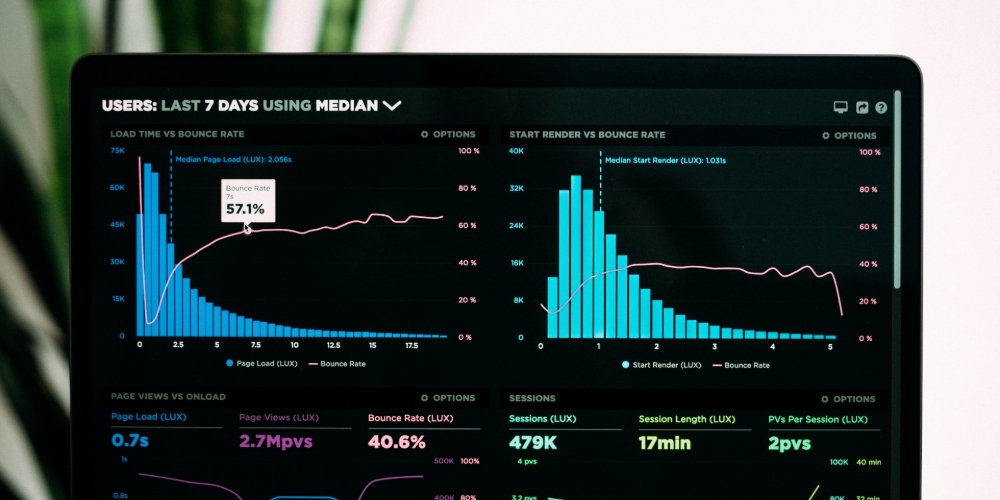Creating Hypertargeted Messaging with Behavioral Intelligence

Business is booming and you need to hire a new employee for your business. You carefully craft the job description, post it online, and wait for the applications to start rolling in.
And roll in they do.
There’s just one problem: none of the applicants are qualified. You find yourself going through resume after unqualified resume, increasingly frustrated.
So what do you do?
Obviously, you need to rework the messaging of your job application so that it generates the response you’ve been looking for. Once you do that, you’ll start getting much more qualified applicants.
The moral of the story? You need to adapt your messaging based on the response it produces.
This applies to your website just as much as it does to a job application.
By paying attention to the digital “body language” (the behavioral response) of your website visitors, you can craft hypertargeted messaging that will resonate deeply with your customers. This, in turn, will lead to more site engagement and ultimately more conversions.
How can you see the aforementioned digital “body language”? It’s all about behavioral intelligence.
Unlocking The Power Of Behavioral Intelligence
First, let’s make sure we’re all on the same page in terms of what behavioral intelligence is. Simply put, behavioral intelligence is insights into the behavior of your visitors based on their personas, objectives, customer journeys, behaviors and actions while on your website.
You can then make intelligent decisions based on that behavior. In other words, you see precisely what your visitors are doing on your site and then optimize your site accordingly.
You may be thinking, We already do that with Google Analytics!
If you’re using Google Analytics, that’s a good start, but it doesn’t give you everything you need in order to make intelligent decisions about your website (and the GA data can, in fact, be highly misleading in certain cases).
Google Analytics can tell you that a particular page on your website has gotten 100 views over the past month. But it can’t tell you how much of the content was actually read on the page, or where visitors were directing their attention or whether the users had a good experience when reading the content. Google Analytics can’t really tell you whether that page is actually achieving its goals.
For example, a client of ours had a knowledge hub. Google Analytics showed that it was getting a ton of traffic, which thrilled the client. But that wasn’t the entire story. When we applied behavioral analytics, we found that after reading the initial paragraph most users abandoned the page. They weren’t clicking, weren’t scrolling through the page and reading, and weren’t engaging with any of the content in the hub.
They would land on the page, give it a quick skim, and then bounce.
Clearly, the messaging needed a significant overhaul. The page’s messaging was actually failing, and we never would’ve known that without behavioral intelligence.
Go Beyond Google Analytics
Ready to amp up your B2B marketing efforts? Give us a shout!
As another example, imagine you sell employee scheduling software and that you have solutions for enterprises, small businesses, and specific industries.
Let’s say that you are using straightforward language at the top of each respective page. For example, for the enterprise page, you might be writing “Online Employee Scheduling Software for the Enterprise” or “Workforce Management Software for the Enterprise.”
If that type of messaging is falling flat and few are displaying the digital body language that would indicate engagement or interest, try language that appeals specifically to an HR director responsible for thousands of employees more deeply. For example, appeal to:
- Your solution’s scalability (e.g., “The Most Scalable Workforce Management Software for Global Enterprises”)
- The seamlessness of integrating time tracking across hundreds of locations (e.g., “Workforce Management Software that Seamlessly Integrates an Endless Number of Your Locations”)
- The ROI your solution delivers for large organizations (e.g., “Powerful Workforce Management Software for Greater Efficiency and Higher Business ROI”)
- Your software’s rule-based structure to guarantee compliance at scale (e.g., “No More Headaches! Rules-Based Enterprise Workforce Management Software that Actually Works at Scale”)
- Your military-grade security (e.g., “Full Control! Achieve Exceptional Enterprise Workforce Management with Military-Grade Security”)
- Your award-winning training and 24/7 global support (e.g., “The Most Awarded Enterprise Workforce Management Software Available. Period.”)
- Etc.
Test these different messages to see which resonates most deeply with this particular persona, and which produces the best website experience for these visitors.
The winning messaging for the enterprise HR director might be completely different than the type of messaging needed for small businesses or particular industries. And even within industries, your messaging might need to be completely different whether speaking to an HR director for a restaurant chain, manufacturing organization, or hospital. By fully segmenting and customizing your messaging accordingly, you’ll be able to provide a better, more relevant user experience for a broad array of site visitors.
How Behavioral Intelligence Works
Now that you know what behavioral intelligence is, let’s break down how it works. Let’s look at the processes and tools behavioral intelligence uses to inform decisions.
Building Personas
Behavioral intelligence begins with building your audience personas. If you’re going to understand why your website visitors are behaving in a particular way and then respond accordingly, you need to understand your audience.
Why are they visiting your website in the first place? What specific actions are you expecting them to take? What problems are they trying to solve? What conversion path should they be following?
If you don’t thoroughly understand your audience and their particular pain points, you won’t be able to make sense of their behavior on your website.
Identifying The Voice Of The Customer
Next, you need to know the Voice of the Customer (VoC). In other words, you need to know the specific language they use, how they speak about their pain points, how they articulate success, etc. Once you’ve identified these specifics, you can integrate it directly into your messaging.
How do you gather this information?
Do interviews with actual customers. Survey them. Ask for their input. This allows you to hear the customer articulate what matters most to them. For one of Stratabeat’s clients, we conducted a national survey and generated approximately 3,500 survey responses. We had included a free-form question at the end of the survey to allow respondents to use their own words in describing their story. Remarkably, the vast majority of respondents chose to share a story. The level of insights uncovered was invaluable.
Build The Customer Journey
Next, you need to map out the customer journey for each persona you’ve created. In other words, you need to determine how a person goes from having a need to visiting your site to becoming a paying client.
What conversion steps need to happen along the way? What questions is the individual asking themselves along the way? How can you answer those specific questions with the messaging on your website?
Heat, Click, and Scroll Mapping
Now it’s time to get into the nitty-gritty of how your website visitors are actually behaving. Heat, click, and scroll maps allow you to see exactly where visitors are hovering with their mouse, where they’re clicking, and how far they’re scrolling on any particular page. These tools are invaluable in seeing exactly what is and isn’t working on your website.
For example, you may see that most visitors aren’t even scrolling 50% down your home page. If your most important messaging is below the 50% mark, then you clearly need to rework the structure of your site.
Video Recordings
Some behavioral intelligence programs take mapping a step further by providing actual video recordings of site visitors. No, there’s not a webcam involved (that’d be plain creepy). Rather, you simply see a recording of their screen, cursor movements, navigation patterns, and the elements that get the most attention.
This highly individualized data can be useful in providing insights that aggregate data doesn’t provide. Filtering the videos by campaign or traffic source or by the type of visitor (new vs. returning, etc.) can help you uncover new opportunities to improve the site experience for your visitors.
Conversion Funnel Tracking
Many programs allow you to track exactly how people are moving through your conversion funnels. For example, you may see that only 50% of your visitors make it from your home page to an actual product page, and that only 7% of visitors make it from a product page to the checkout.
These kinds of insights can help you plug leaks in your funnel and capture more revenue over the long run.
Behavior-based CTAs
Behavior-based CTAs are triggered only if a visitor displays a specific type of behavior or takes a defined action.
For example, we added one such CTA in our blog, requesting that visitors subscribe to our newsletter. The site visitor needs to scroll down 70 percent of a post before it’s triggered, as we felt that someone reading that far down a post would be highly interested in the content and would likely appreciate additional, similar content. Amazingly, we experienced a 300 percent jump in opt-in rate to as a result of merely that one behavior-based CTA.
Once you see a behavior-based CTA positively impact your website performance, test different messaging to determine the most effective, targeted messaging for each CTA. In this way, we can maximize results even for CTAs that are already working well.
Using Quantitative and Qualitative Data In Behavioral Intelligence
Persona building, determining the voice of the customer (VoC), and customer journey mapping provide you with qualitative data that helps you understand your target audience more deeply so that you can begin messaging them more effectively.
Session recordings of those on your website further deepen the qualitative data you can work with in seeing how to optimize your site in improving the user experience as well as your website performance.
Behavioral analytics and conversion funnel tracking give you quantitative data that allows you to see exactly how people are behaving on your website.
With all of these tools at your disposal, you can figure out which parts of your messaging are successful and which are failing.
For example, let’s say you provide BI software but no one is scrolling to the bottom of your data modeling page. Using scroll maps, heat maps, click maps, and session recordings, you can determine exactly where people are dropping off, what they’re paying attention to and what information they’re missing. At those points on the page that they are ignoring and quickly moving past your content, try updating the headers, sub-heads, callouts, bullet points, CTAs, and other language.
If you want to improve your site, create hypertargeted messaging by figuring out what people are actually reading on your site, where their mouse scrolls, how far they scroll, what they click on, etc. Put the most important, mission-critical information up at the top or adjust your messaging so that it resonates with customers on an emotional level.
For one of our clients, we engaged in eight hours of customer interviews as part of persona building and developing the voice of the customer. As a result of that interview process, we were able to glean specific ways that the customers were articulating their problems and desired solutions.
We immediately changed the messaging on the client’s home page to reflect what the customers were saying, and as a result, site engagement and conversions significantly increased.
Another of our clients was using “dictionary messaging” throughout their website. In other words, they were explaining what they did rather than why the customer should care. As a result, the site was not performing well in terms of engagement or conversions.
We redesigned the site and transformed the messaging so that it was focused on highlighting client success, solving the client’s problems, and evoking an emotional response from the site’s visitors. Within months, metrics across the board roughly doubled.
Better B2B Branding with Behavioral Intelligence
Eager to take your brand messaging to the next level? Give us a shout!
Follow The Data, Make Changes
Using behavioral analytics, we sometimes notice a lack of engagement on a company’s product or services page. This data enables us to try different messaging and to literally see the different behavioral patterns based on the new messaging until we have a winner. In other words, we can implement new messaging, see exactly how visitors respond, and then tweak it until we have the optimum messaging.
Similarly, we sometimes spot areas where there’s intense interest from the site visitor, but it’s a dead end on the page. In those cases it makes sense to add links to relevant content or value-added videos or CTAs to guide the visitor to their next step, etc.
Conversion optimization is a useful activity in that you can measure overall conversions, but with behavioral analytics, you can go deeper by seeing the actual interaction and behavior at the precise point of the messaging, regardless of its location on the page.
As you look at heat maps and scroll maps and video recordings, it might become apparent that the language around a form or in your CTA button is effective, but your opening header isn’t effective.
Or, it might be that the top half of your page is effective, but your subheaders and bullet points lower on the page do nothing for the site visitor.
You can also follow where in the funnel across your site (not just within one page) they drop off. They might make it to your blog post and then get your free checklist download, but they never head to your contact page or contact you about your services. Now you know where in the funnel your messaging is failing.
Armed with this behavioral intelligence, you’ll be able to create a site that keeps people on the site, makes them read all the way to the bottom, moves them through your funnel, and ultimately become a lead through CTAs, surveys or contact forms.
Behavioral Intelligence = Happy Website Visitors
By implementing hypertargeted messaging based on behavioral intelligence, you’ll create a website that speaks directly to site visitors, resonates more deeply, keeps them more engaged, gives them a better overall site experience, and ultimately leads to more conversions.


